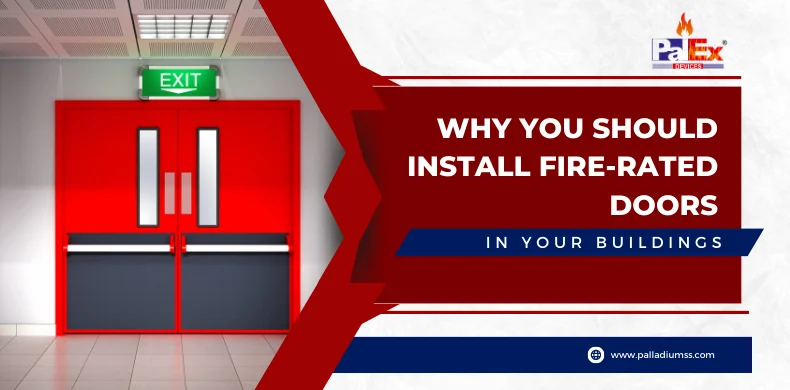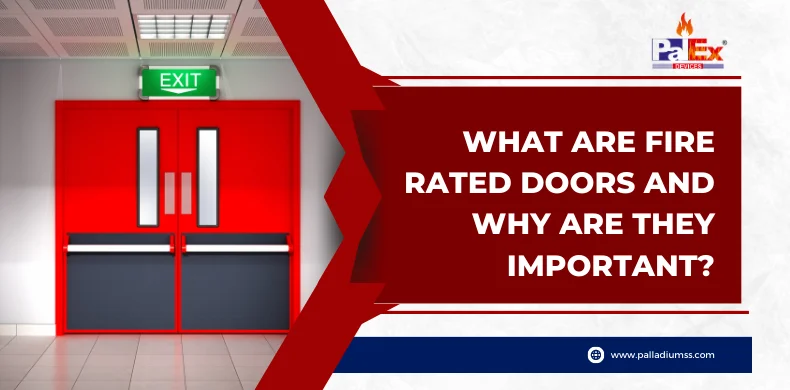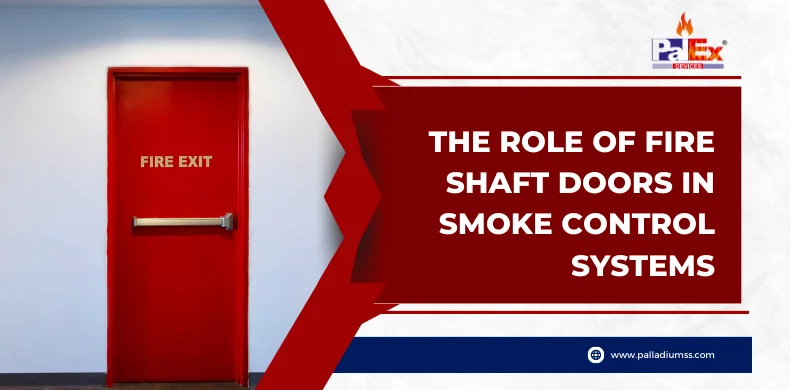They are an essential part of a building’s fire safety system and can help save lives in the event of a fire. When a fire starts, the first thing that you should do is close all of the doors in the affected area.
This will help to contain the fire and stop it from spreading. If there is a fire door in the area, make sure that you close it too. Fire doors are usually equipped with a self-closing device, which means they will close automatically if a fire occurs. However, it is crucial to ensure that the door is shut correctly before leaving the area.Why You Should Install Fire-Rated Doors in Your Buildings
When a fire starts, the first thing that you should do is close all of the doors in the affected area. This will help to contain the fire and stop it from spreading. If there is a fire door in the area, make sure that you close it too.
Fire doors are usually equipped with a self-closing device, which means they will close automatically if a fire occurs. However, it is essential to ensure that the door is shut correctly before leaving the area.
Fire doors are an essential part of a building’s fire safety system. They are usually made of metal or fire-resistant material and are typically located in areas where there is a risk of fire, such as in stairwells or near exits.
Fire doors can help to save lives in the event of a fire. When choosing doors for your building, it is essential to select both fire-rated and impact-rated doors. Fire-rated doors are tested to withstand fire for a certain period of time, and they are usually made of metal or fire-resistant material.
Impact-rated doors are tested to withstand the force of a collision, and they are usually made of steel or reinforced wood. Choosing both fire-rated and impact-rated doors will help ensure the safety of your building and its occupants.
What Should One Look For in Fire Doors?
When choosing doors for your building, it is essential to select both fire-rated and impact-rated doors. Fire-rated doors are tested to withstand fire for a certain period of time, and they are usually made of metal or fire-resistant material. Impact-rated doors are tested to withstand the force of a collision, and they are generally made of steel or reinforced wood. Choosing both fire-rated and impact-rated doors will help ensure the safety of your building and its occupants.Conclusion
Fire doors are an essential component of any building’s fire safety system. Fire doors help contain fires, prevent the spread of smoke, and even save lives. When choosing doors for your facility, be sure to select fire-rated and impact-rated doors to ensure the safety of your occupants.What are Fire Rated Doors and Why are They Important
Types of Fire-Rated Doors
There are several types of fire-rated doors available for different applications. Some of the common types of fire-rated doors include:- Hollow Metal Doors: These are the most commonly used fire-rated doors, and they are made of steel or other metal materials. They are durable and offer excellent fire protection.
- Wooden Doors: Fire-rated wooden doors are available in various designs and finishes to match the building’s decor. They provide good insulation and can resist fire for up to 60 minutes.
- Glass Doors: Glass doors with fire ratings suit buildings requiring great natural lighting. These things are made from solid glass that can handle scorching temperatures for an hour without breaking.
- Steel Doors with a Glass Panel: The doors have see-through parts made of glass that let sunlight come through and brighten up the area around them. These objects exhibit impressive fire resistance, enduring flames for as long as 90 minutes.
- Sliding Doors: Fire-rated sliding doors are ideal for buildings with restricted space. They come in various materials, including steel, glass, and wood.
- Double Doors: Fire-rated double doors have two that meet in the centre and provide additional fire and smoke protection.
Importance
Here are some key points on why fire-rated doors are essential:- Fire Protection: During an emergency, persons and property are protected by fire-rated doors.
- Building Safety: Fire-rated doors are crucial for security, particularly in high-rise structures and buildings with numerous people.
- Safety Features: Additional safety elements included in fire-rated doors include automatic shutting mechanisms and seals that stop the spread of hazardous gases and smoke.
- Proper Installation and Maintenance: Fire-rated doors must be properly fitted and maintained to ensure their efficacy in the case of a fire.
The Role of Fire Shaft Doors in Smoke Control Systems
What are Fire Shaft Doors?
Fire shaft doors stop fire and smoke from moving between floors in significant buildings. These doors help keep fires from spreading in buildings. They also give people more time to leave the building, making the fire less damaging. Fireproof doors are often made of things that can handle fire without getting damaged. In an emergency, you can leave the building using particular doors on the stairs, elevators or other parts that go up and down. They have signs to help people know where they are during an emergency.The Importance of Fire Shaft Doors in Smoke Control Systems
Here are some reasons why fire shaft doors are so crucial in smoke control systems:- Fire shaft doors are essential components of smoke control systems in buildings.
- They are made to stop fire and smoke from moving up or down through building staircases, elevators, and air vents.
- Fire shaft doors are doors that can handle extreme heat and fires. They are usually made of solid materials like steel.
- These doors have particular parts to stop fire and smoke from getting through, even if they are not closed.
- Fire shaft doors keep fire and smoke from spreading throughout a building, which is essential for keeping people safe.
- It’s necessary to check fire doors regularly to ensure they work correctly in a fire.
Design and Functionality of Fire Shaft Doors
Here are some design and functionality features of fire shaft doors:- Fire shaft doors are specialized doors designed to prevent the spread of fire and smoke between floors through vertical shafts.
- Usually, they are constructed using fire-resistant substances such as steel to endure extreme heat and flames for a particular length of time.
- The fire shaft doors have fireproof seals and mechanisms prohibiting smoke and fire from passing through, even when not fully closed.
- These types of doors are commonly installed within the apertures of vertical channels such as staircases, lifts, and other multi-tiered pathways in edifices.
- In a fire outbreak, the fire shaft doors are designed to remain closed, preventing the spread of flames and smoke to other building sections.
- Fire shaft doors may have different ratings based on fire resistance and durability. Some may be designed to provide additional sound insulation and can be customized to fit different architectural styles.
- Regular maintenance and testing of fire shaft doors are essential to ensure their proper function during a fire.



